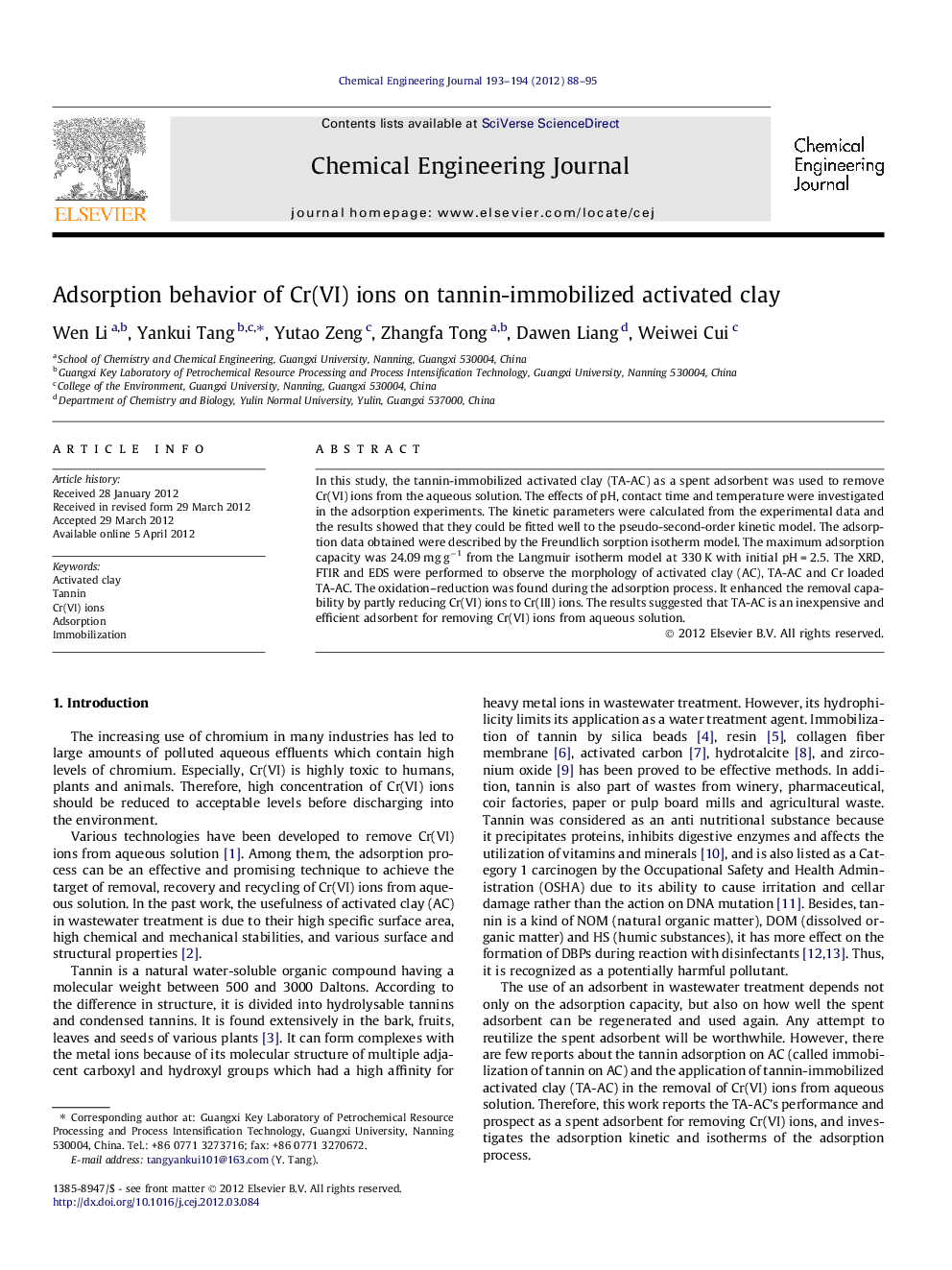| Article ID | Journal | Published Year | Pages | File Type |
|---|---|---|---|---|
| 149837 | Chemical Engineering Journal | 2012 | 8 Pages |
In this study, the tannin-immobilized activated clay (TA-AC) as a spent adsorbent was used to remove Cr(VI) ions from the aqueous solution. The effects of pH, contact time and temperature were investigated in the adsorption experiments. The kinetic parameters were calculated from the experimental data and the results showed that they could be fitted well to the pseudo-second-order kinetic model. The adsorption data obtained were described by the Freundlich sorption isotherm model. The maximum adsorption capacity was 24.09 mg g−1 from the Langmuir isotherm model at 330 K with initial pH = 2.5. The XRD, FTIR and EDS were performed to observe the morphology of activated clay (AC), TA-AC and Cr loaded TA-AC. The oxidation–reduction was found during the adsorption process. It enhanced the removal capability by partly reducing Cr(VI) ions to Cr(III) ions. The results suggested that TA-AC is an inexpensive and efficient adsorbent for removing Cr(VI) ions from aqueous solution.
► TA-AC as a spent adsorbent has well absorption capability for Cr(VI) ions. ► The absorbing effects depend on the proton supply of the aqueous solution. ► The oxidation–reduction was found along the adsorption process. ► The adsorption process follows the pseudo-second-order kinetic model. ► The adsorption process follows the Freundlich isotherm model.
